
CAE Software【Femtet】Murata Software Co., Ltd.

Example4 Deformation due to the Temperature Gradient #4 – Transient Analysis
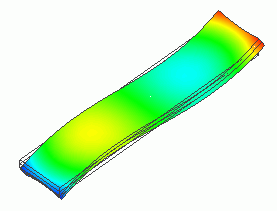
General
-
A bimetal consisting of two different metal plates is analyzed.
It deforms under the thermal load. The transient analysis visualizes the deformation.
-
The deformation, the distributions of the displacement and the mechanical stress over the time are solved.
-
Unless specified in the list below, the default conditions will be applied.
Analysis Space
|
Item |
Settings |
|
Analysis Space |
3D |
|
Model unit |
mm |
Analysis Conditions
Select Thermal analysis and Mechanical stress analysis.
|
Item |
Settings |
|
Solvers |
Thermal analysis [Watt] |
|
Thermal-Analysis Type |
Transient analysis |
|
Options |
N/A * |
* “Thermal Load” is selected by default for the thermal load-mechanical stress coupled analysis.
The Step/Thermal Load tab is set as follows.
|
Tab |
Setting Item |
Settings |
|
Step/Thermal Load * |
Reference temperature |
25[deg] |
* The reached temperatures come from the thermal analysis.
* Thermal coupled steps are set up on the transient analysis tab.
The transient analysis is set up in transient tab as follows.
|
Tab |
Setting Item |
Settings |
||||||||
|
Transient analysis |
Table |
|
||||||||
|
Initial Temperature |
25[deg] |
Model
Two flat solid bodies are created to form metal plates. One is copper and the other is tungsten. Their coefficients of expansion are different.
As it deforms itself, there is no need to set up the boundary conditions to constrain.
The “”temperature” boundary conditions are set on both ends of the plates.
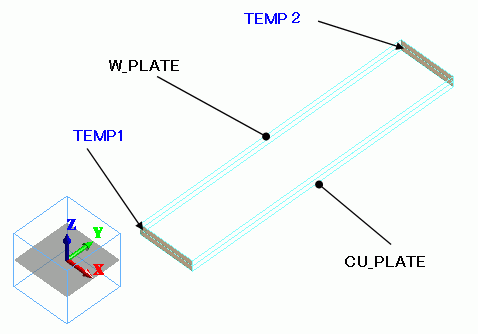
Body Attributes and Materials
|
Body Number/Type |
Body Attribute Name |
Material Name |
|
0/Solid |
CU_PLATE |
008_Cu * |
|
1/Solid |
W_PLATE |
005_W |
* Available from the Material DB
Boundary Conditions
Thermal analysis is performed based on the boundary conditions below. The resulting temperature distribution is forwarded to mechanical stress analysis.
|
Boundary Condition Name/Topology |
Tab |
Boundary Condition Type |
Settings |
|
TEMP1/Face |
Thermal |
Temperature |
-10[deg] |
|
TEMP2/Face |
Thermal |
Temperature |
60[deg] |
Results
The temperature distributions as a result of Watt are shown below.
In 0.2 seconds:
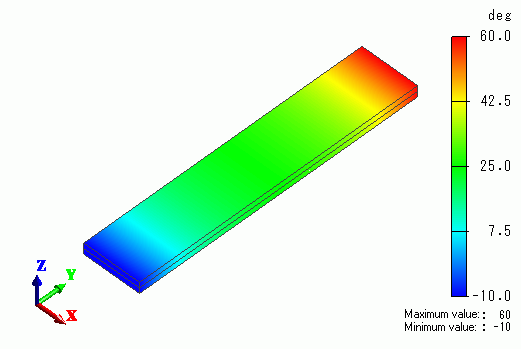
In 1.0 seconds:
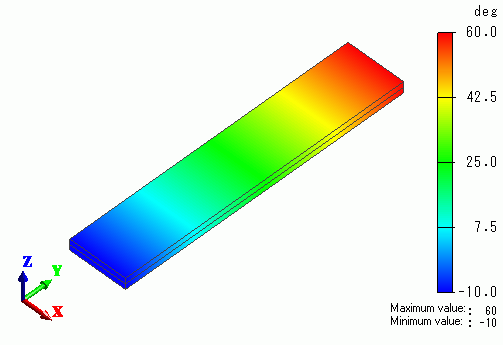
The temperature gradient gets converged as the time passes.
The deformations as a result of Galileo are shown below. The color indicates the Z displacement.
In 0.2 seconds:
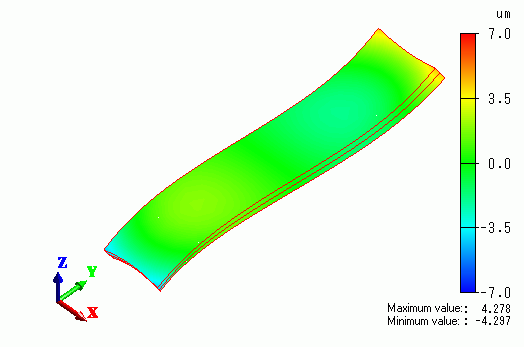
In 1.0 seconds:
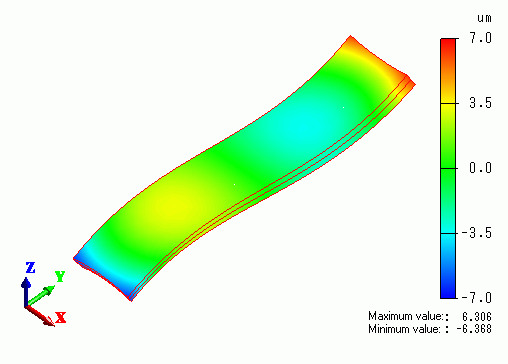
The bimetal deforms greater with the temperature gradient converged.

